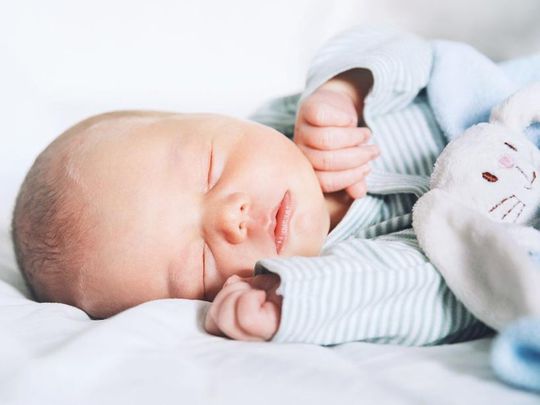
What is flat head syndrome?
“Deformational Plagiocephaly (DP), is a medical condition more commonly known as ‘flat head syndrome’ (FHS), which occurs when an infant’s head becomes flattened, or misshapen due to the head continually resting on a surface that does not support the shape of a baby’s head," says Suzanne Browne from Clevamama, which manufactures baby and children products.
“Infant heads are soft to allow for the initial passage through the birth canal and then the incredible brain growth that occurs in the first year of life. During the early months of life, they are more susceptible to being ‘moulded’ into a flat shape, or taking the form of the surface that the skull is in contact with.
“The condition affects many infants – up to 45 percent – especially since the introduction from health officials of the Back to Sleep campaign, in 1994, which recommends that babies are placed to sleep on their back to reduce the number of SID’s (Cot Deaths).”
“Plagiocephaly occurs when an infant’s soft skull becomes flattened in one area, due to repeated pressure on that particular part of the head. Many babies develop plagiocephaly by sleeping regularly in one position, or by spending extensive time sitting in the same position in a car seat or swing.
“It occurs more often in premature infants whose skulls are even more pliable than other babies. These babies may spend a great deal of time lying down as they receive treatment.”
How can I prevent it?
There are a few ways to help prevent Flat Head Syndrome:
- Practice tummy time. “Provide plenty of supervised time for your baby to lie on their stomach while awake during the day. Tummy time helps the normal shaping of the back the head and also helps your baby to develop strong neck and shoulder muscles, to promote motor skills and to reach early achievement milestones including rolling over, sitting up and crawling.”
- Vary positions in the crib “Consider how you lay your baby down in the crib. Most right-handed parents carry infants cradled in their left arms and lay them down with the heads to their left. In this position, the infant must turn to the right to look out into the room. Position your baby in the crib to encourage active turning of the head to the side that’s not flattened.”
- Hold your baby more often “Limit the time your child spends lying on their back, or with their head resting against a flat surface. Such as in car seats, strollers, swings, bouncy seats etc. Pick up and hold your baby often, which will take pressure off the head.”
- Change the head position while your baby sleeps “Change the position of your baby’s head (from left to right, right to left) when your baby is sleeping on their back. Even if your baby moves around during the night, place your child with the rounded side of the head touching the mattress and the flattened side facing up. Don’t use wedge pillows, or other devices, to keep your baby in one position.”
Read more:








